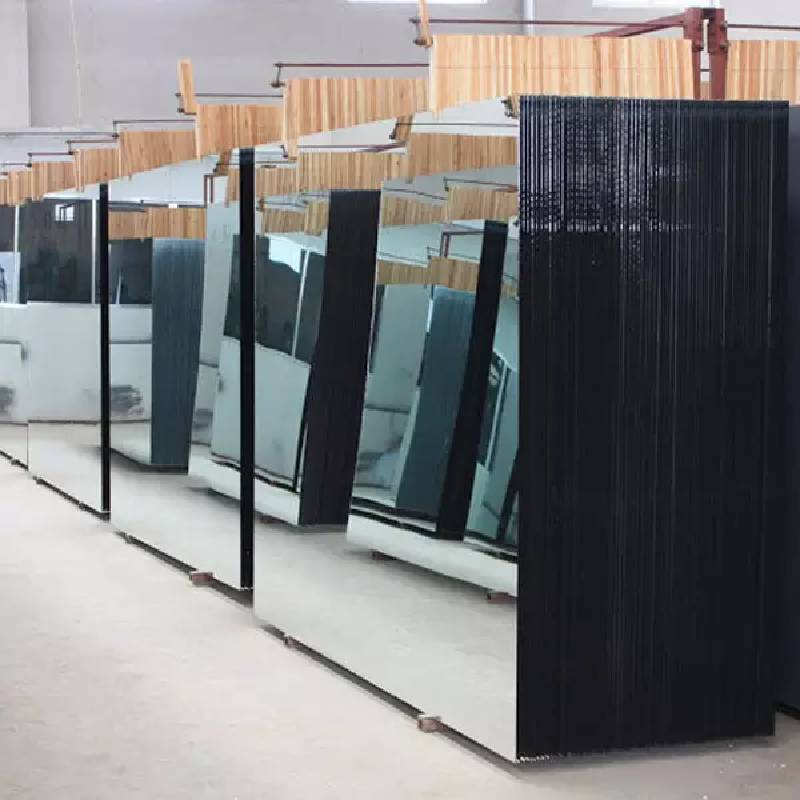Tempered glass, also known as toughened glass, is a type of safety glass that has been processed by controlled thermal treatments to increase its strength compared to standard glass. This unique manufacturing method involves heating the glass to over 600 degrees Celsius and then rapidly cooling it, a process that alters the physical and chemical properties of the glass at a molecular level. The result is a material that can withstand greater stress and impact, making it a vital component in a variety of applications.
One of the primary benefits of tempered glass is its enhanced strength. This makes it suitable for use in environments where safety is paramount, such as in glass doors, windows, and facades, as well as in vehicles and buildings. Tempered glass is about four to five times stronger than standard glass of the same thickness, which means it can better resist breaking due to impact or thermal stress. This property is especially important in areas subject to severe weather conditions or frequent fluctuations in temperature.
.
The versatility of tempered glass extends to its aesthetic qualities as well. It can be manufactured in various thicknesses and can be treated with coatings or films to enhance its appearance or reduce glare. Moreover, it can be produced in a range of tints and textures, allowing architects and designers to incorporate it seamlessly into their projects. This flexibility makes tempered glass an attractive option for modern architectural designs, which often prioritize natural light and open spaces.
tempered glass function
Another appealing feature of tempered glass is its resistance to thermal stress. It can handle temperature changes without the risk of cracking or breaking, making it ideal for applications like oven doors and glass cooktops. Its ability to withstand sudden temperature changes is a significant advantage over ordinary glass, which can easily shatter when exposed to extreme heat or cold.
The production of tempered glass is not just about enhancing strength and safety; it also involves rigorous quality control measures. This ensures that each piece meets strict industry standards. As a result, tempered glass is not only a reliable material but also one that instills confidence in its users.
In conclusion, tempered glass is a remarkable material that combines strength, safety, aesthetics, and versatility. Its unique properties make it suitable for a diverse range of applications, from architectural features to everyday household items. As technology advances, the production techniques for tempered glass will continue to evolve, potentially leading to even greater innovations in design and functionality. With its many advantages, tempered glass is poised to remain a crucial element in both residential and commercial construction for years to come. Whether it’s enhancing the safety of a space or adding a modern touch to a building, tempered glass plays an indispensable role in contemporary design.
 Afrikaans
Afrikaans  Albanian
Albanian  Amharic
Amharic  Arabic
Arabic  Armenian
Armenian  Azerbaijani
Azerbaijani  Basque
Basque  Belarusian
Belarusian  Bengali
Bengali  Bosnian
Bosnian  Bulgarian
Bulgarian  Catalan
Catalan  Cebuano
Cebuano  Corsican
Corsican  Croatian
Croatian  Czech
Czech  Danish
Danish  Dutch
Dutch  English
English  Esperanto
Esperanto  Estonian
Estonian  Finnish
Finnish  French
French  Frisian
Frisian  Galician
Galician  Georgian
Georgian  German
German  Greek
Greek  Gujarati
Gujarati  Haitian Creole
Haitian Creole  hausa
hausa  hawaiian
hawaiian  Hebrew
Hebrew  Hindi
Hindi  Miao
Miao  Hungarian
Hungarian  Icelandic
Icelandic  igbo
igbo  Indonesian
Indonesian  irish
irish  Italian
Italian  Japanese
Japanese  Javanese
Javanese  Kannada
Kannada  kazakh
kazakh  Khmer
Khmer  Rwandese
Rwandese  Korean
Korean  Kurdish
Kurdish  Kyrgyz
Kyrgyz  Lao
Lao  Latin
Latin  Latvian
Latvian  Lithuanian
Lithuanian  Luxembourgish
Luxembourgish  Macedonian
Macedonian  Malgashi
Malgashi  Malay
Malay  Malayalam
Malayalam  Maltese
Maltese  Maori
Maori  Marathi
Marathi  Mongolian
Mongolian  Myanmar
Myanmar  Nepali
Nepali  Norwegian
Norwegian  Norwegian
Norwegian  Occitan
Occitan  Pashto
Pashto  Persian
Persian  Polish
Polish  Portuguese
Portuguese  Punjabi
Punjabi  Romanian
Romanian  Russian
Russian  Samoan
Samoan  Scottish Gaelic
Scottish Gaelic  Serbian
Serbian  Sesotho
Sesotho  Shona
Shona  Sindhi
Sindhi  Sinhala
Sinhala  Slovak
Slovak  Slovenian
Slovenian  Somali
Somali  Spanish
Spanish  Sundanese
Sundanese  Swahili
Swahili  Swedish
Swedish  Tagalog
Tagalog  Tajik
Tajik  Tamil
Tamil  Tatar
Tatar  Telugu
Telugu  Thai
Thai  Turkish
Turkish  Turkmen
Turkmen  Ukrainian
Ukrainian  Urdu
Urdu  Uighur
Uighur  Uzbek
Uzbek  Vietnamese
Vietnamese  Welsh
Welsh  Bantu
Bantu  Yiddish
Yiddish  Yoruba
Yoruba  Zulu
Zulu 

